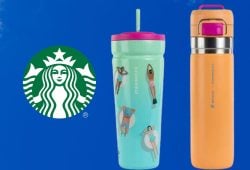Cosmetics giant Estée Lauder announced this Tuesday a major restructuring plan that includes cutting up to 7,000 jobs as the company grapples with persistent weak demand, causing its stock to soar nearly 20%.
The cosmetics industry has experienced unprecedented growth in recent years, driven by innovation, digitalization, and shifting consumer preferences. According to a report by consulting firm Statista, the global beauty and personal care market reached a value of $646 billion in 2024 and is projected to exceed $750 billion by 2027.
The same source indicates that in emerging markets, the Asia-Pacific region has established itself as the fastest-growing area, with China and South Korea leading sales thanks to their influence on global trends like Korean beauty (K-Beauty). In Latin America, interest in cosmetics with native ingredients has driven the growth of local brands aiming to compete with international giants.
What Will Happen to Estée Lauder?
Among the information released, the Manhattan-based company, founded and controlled by the Lauder family of New York, stated that it will cut around 10% of its workforce as part of an expanded recovery plan under new CEO Stéphane de La Faverie, who took over the role on January 1.
With this move, the company now expects third-quarter earnings to fall well below expectations, citing challenges in its travel retail business in Asia, particularly in airports and travel destinations in places like South Korea and China.
“For the third quarter, we expect soft overall retail trends in Asia’s travel retail sector to persist, significantly pressuring our organic net sales,” La Faverie told international media.
It’s important to note that the company, which owns well-known brands like Clinique and MAC, also stated that it will delay publishing its full-year forecast due to “evolving global geopolitical uncertainty.”
This comes as Estée Lauder has been severely impacted for months, facing weak demand for its high-end fragrances and makeup products and fierce competition from rivals like L’Oréal, which has been quicker to launch trendy new products. As a result, its stock has fallen more than 50% in the past 12 months.
Additionally, multiple reports indicate that Estée Lauder has struggled to boost sales growth in China, which accounted for approximately a quarter of the company’s sales in 2024, due to high unemployment, a struggling economy, and a growing preference for local brands.
“In simple terms, we lost our agility. We didn’t seize the biggest growth opportunities,” said de La Faverie in a post-earnings call.
Following this announcement, outlets like Bloomberg reported that net sales are expected to decline between 10% and 12% in the three months ending March 31, worse than the previous 6.8% drop.
“While we are not satisfied with our outlook for the third quarter, it mainly reflects weak retail sales trends in our travel retail business in Asia, which deteriorated in our second quarter due to challenges in South Korea,” added de La Faverie.
What Does the Recovery Plan Entail?
In this regard, de La Faverie stated that the recovery plan focuses on getting new and trendy cosmetic products to consumers more quickly and marketing them better.
The 7,000 job cuts include 3,000 positions already affected, which were announced last February. The company also stated that contract terminations and other restructuring-related costs are expected to total between $1.2 billion and $1.6 billion.
“The expanded plan is designed to further transform the company’s operating model to fund a return to sales growth and restore a strong double-digit adjusted operating margin over the coming years while continuing to manage external volatility, such as potential global tariff increases,” Estée Lauder said in a statement.
With this announcement, the luxury company also appointed Jane Hertzmark as Chief Brand Officer and revealed that its brands will be organized into categories, including skincare and makeup.
Additionally, the company stated that it is restructuring its organization into four geographic groups.
Reed more:
Walmart removes Hispanic signage and products from stores
Starbucks: These are the new Valentine’s Day drinks for 2025
How did the fentanyl epidemic start? A story of unethical marketing









